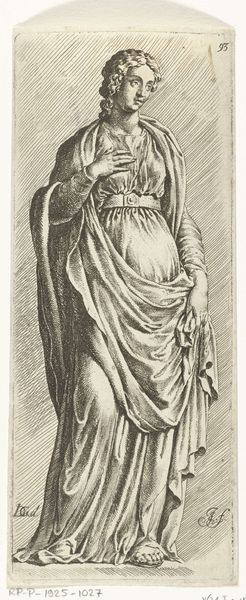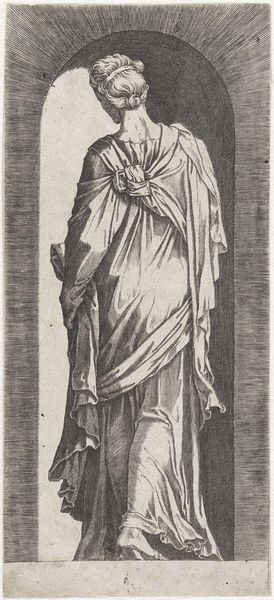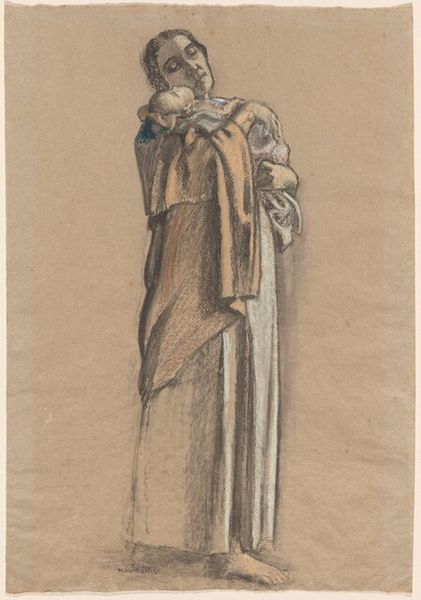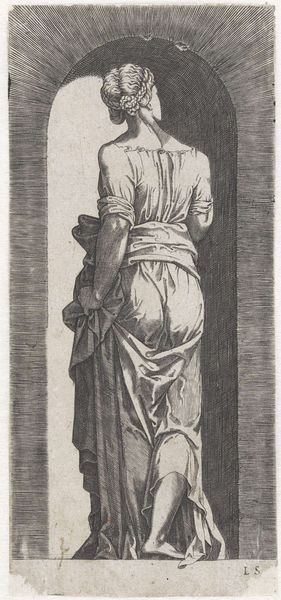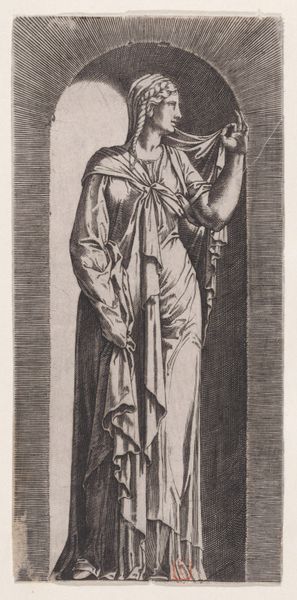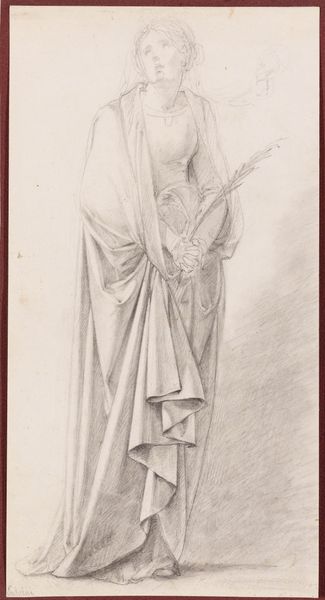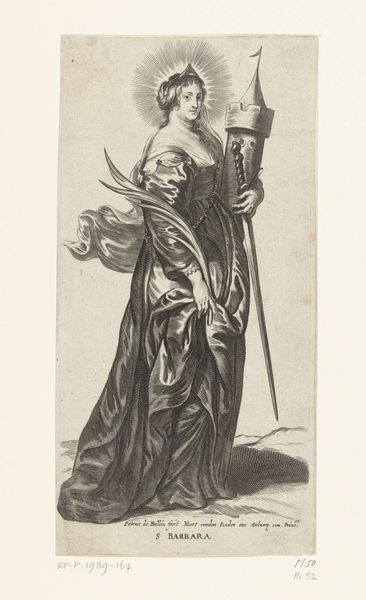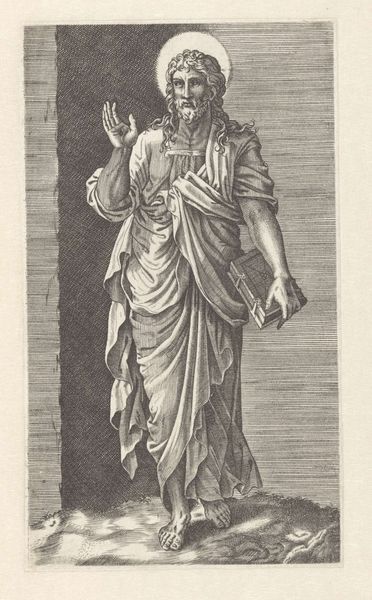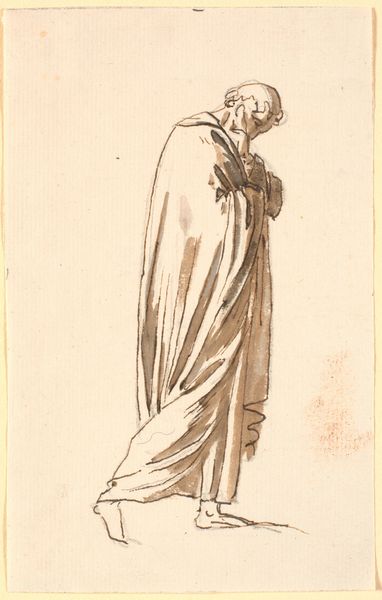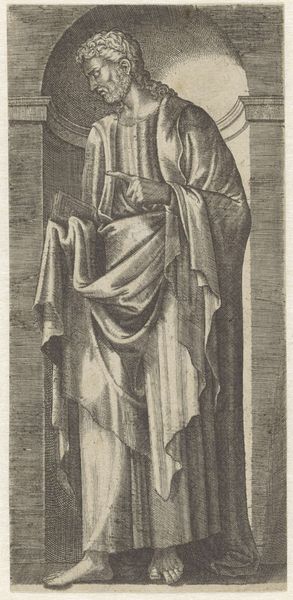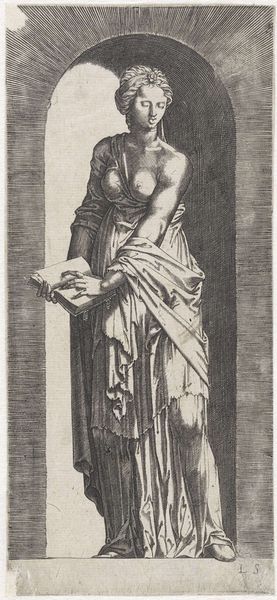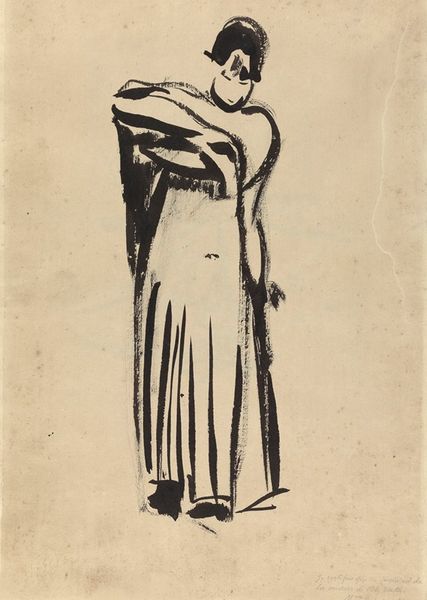
print, etching
#
portrait
# print
#
etching
#
old engraving style
#
classical-realism
#
portrait drawing
Dimensions: height 221 mm, width 98 mm
Copyright: Rijks Museum: Open Domain
Curator: This print, "Beeld van Minerva zonder onderarm," or "Statue of Minerva without Forearm", was created after 1664 by Jan de Bisschop. It’s an etching depicting the Roman goddess of wisdom, handicraft, and warfare. My initial sense is of delicate strength, would you agree? Editor: Absolutely! She seems to be contemplating something with incredible focus and there’s a really striking fragility, especially given that missing forearm… like, what’s her story? It almost feels like she’s deliberately holding back, not unleashing her full potential. Curator: That resonates strongly. Minerva's presentation here begs questions about agency, considering her position in patriarchal narratives. How much control did female figures, even goddesses, truly have? Bisschop renders her as a classical ideal, but with this incompleteness, he possibly prompts a contemporary questioning of those very ideals. Editor: It makes me think about contemporary beauty standards, actually! This print isn’t about flawless representation but a celebration of strength and wisdom despite a missing part. There’s an honesty that's almost radical. Also, you've got to love the way Bisschop plays with light and shadow using only line work! Curator: Yes, the technique emphasizes the textures of both her robes and the stone itself, adding depth to what might have been just another classical reproduction. I wonder if he chose etching specifically to suggest the fragmented and excavated nature of classical knowledge? Editor: That's a delicious question. Maybe he wanted us to reconsider history, not just as a set of glorious facts but as a collection of impressions and fragments which somehow make up a really moving whole. And it seems we're still wrestling with some of the core gender inequalities inherent in our world. Curator: Indeed. Works like this encourage us to explore not just art history but its dialogue with ongoing struggles for liberation. Editor: You know, getting a chance to consider Bisschop's Minerva has prompted me to appreciate the imperfections in art and life and, in a weird way, I feel stronger.
Comments
No comments
Be the first to comment and join the conversation on the ultimate creative platform.
